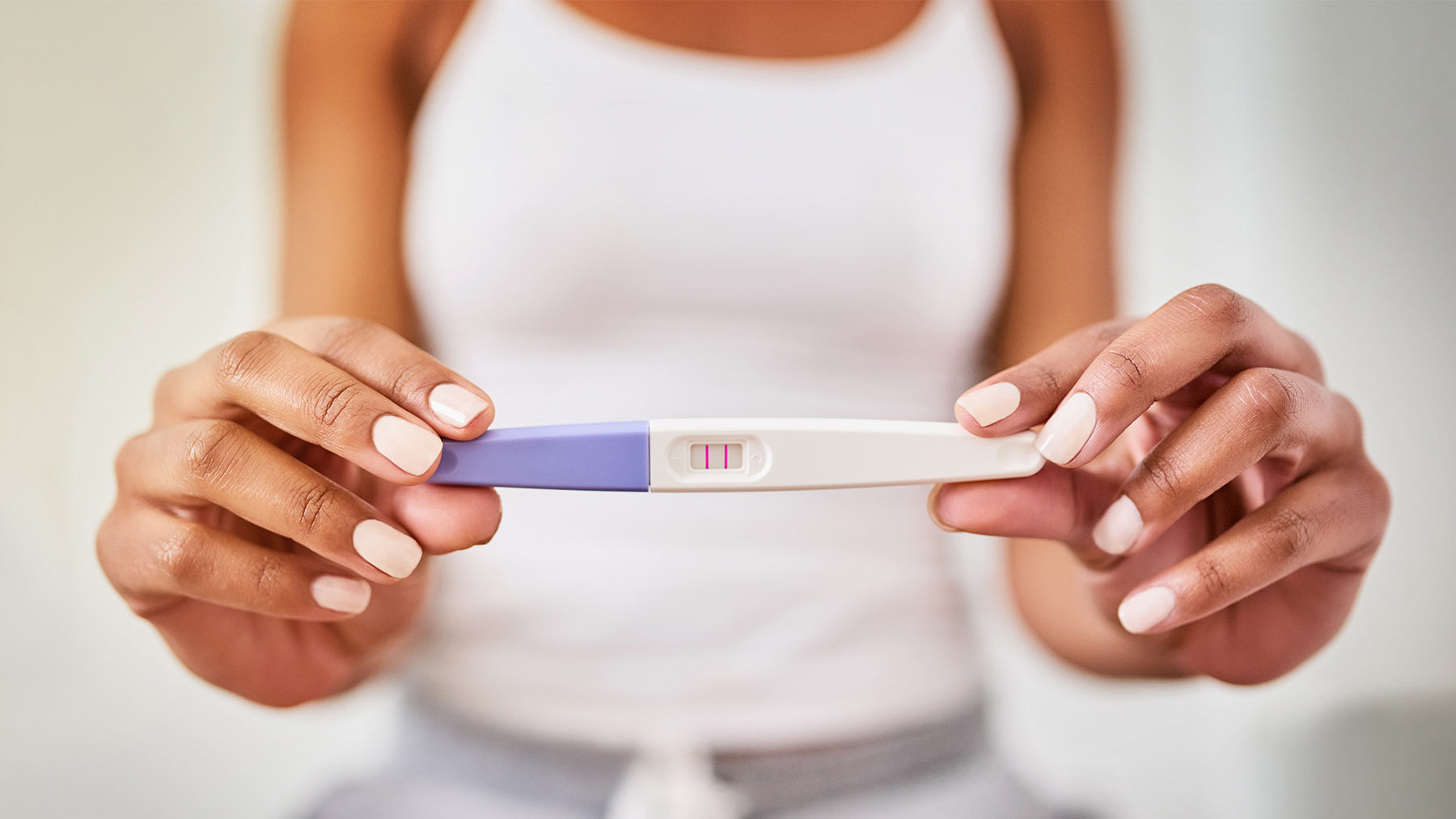If you think you are pregnant, the only way to be sure of it is to take a pregnancy test. The pregnancy test, in fact, is the diagnostic tool that allows you to ascertain the possible conception.
Sometimes physical symptoms such as nausea, swollen breasts, drowsiness, heartburn and white leakage can be a sign of a possible pregnancy. However, it is also true that these are not univocal symptoms of pregnancy: many women experience this symptomatology even when they are close to the onset of menstruation (premenstrual syndrome). A delay in the menstrual cycle is already a stronger signal than a possible conception.
However, when you are suspected of being pregnant, it is always better to carry out a pregnancy test immediately, so as to quickly take the necessary steps to start a peaceful pregnancy.
Let’s see what types of pregnancy tests you have available and the characteristics of each one …
How do pregnancy tests work?
All pregnancy tests determine whether conception occurred, thanks to the detection of human chorionic gonadotropin (HCG, Human Chorionic Gonadotropin). The beta-HCG hormone is detectable only if the woman is pregnant, which is why it is also called “pregnancy hormone”.
The HCG is produced by the fertilized egg and then by the placenta: it is possible to detect microscopic quantities starting from the implantation of the embryo in utero, about 6-7 days after fertilization. However, since they are minimum quantities, in this first phase they cannot be traced by a test.
In fact, at an early stage HCG levels are very low, but they increase rapidly in the first days of pregnancy. This is why detecting their presence is a practical and very safe way to determine whether you are pregnant or not.
As soon as it is produced, the HCG hormone enters the bloodstream, to then be eliminated in the urine. For this reason, it can be detected either with a domestic urine test, or with a laboratory blood test.
Urinary pregnancy tests
Normally, tests for domestic pregnancy are urinary tests . They can be purchased in pharmacies or even at the supermarket and do not require a medical prescription .
Their operation is based on a chemical reaction , readable after a few minutes: they contain a strip with molecules that recognize the beta-HCG hormone.
When to take the pregnancy test?
The advice is to carry out the test starting from the first day of menstruation delay (even if today there are early tests that can be carried out in advance). And ‘the best time, because, if fertilization has occurred, the level of the human chorionic gonadotropin (hormone produced by the embryo) will be sufficiently high that it can be detected.
Try to perform the test in the morning, just wake up and fast, because at this time of day the HCG hormone, if present, is more concentrated in the urine. If you know you need to take the test, it’s best to avoid drinking too much, because the hormone may be diluted.
How to perform the test correctly
Home pregnancy tests are very simple to perform: you have to put the appropriate strip under the urine stream for a few seconds, or immerse the stick in a clean container, where you have collected the urine.
How to read the results
After taking the test, you have to wait for the colored lines to appear. Depending on the concentration of the HCG hormone, you can observe a positive result in 1 minute. To confirm a negative result, you have to wait 5 minutes.
Do not read the result after 30 minutes because the pregnancy test is designed for a fast reaction.
Negative result: you are not pregnant
Only the control window is colored (it means the test is valid), but there is no colored line in the test window because the HCG concentration is not present or is too low. If you see a line, it may mean that you took the test too early. In this case, wait a few days and repeat it.
Positive result: probably pregnant
See 2 colored lines: this indicates that there is almost certainly an ongoing pregnancy.
Invalid test: uncertain results
No lines in the two windows. Your test may have expired or you did not follow the instructions correctly. The advice is to buy another test.
Reliability of the home pregnancy test
Home pregnancy tests are very reliable, around 98-99%. Obviously, the reliability also depends a lot on a correct execution, which is why if you decide to use one you always have to follow the manufacturer’s instructions.
The cases of false negatives
The false negative means that the test is negative but the woman is pregnant. Here are some of the causes of false negatives …
- A test carried out too early in pregnancy, and therefore with HCG levels so low that they are not detectable;
- Defective or expired test;
- Excessive dilution of urine, due to the intake of a lot of water or diuretic drugs.
In any case, if you think you are pregnant, the advice is to wait a few days and repeat the test. If it is negative again and menstruation does not arrive, the advice is to consult the gynecologist.
We remind you that, even in the event of an extra uterine pregnancy, pregnancy tests are reliable and will give a positive result. In fact, even if the pregnancy in these cases occurs outside the uterus, there is still a normal production of beta-HCG, which have only slightly less rapid growth (normally doubling every 48h).
The cases of false positives
The cases of false positive are very rare.
There is talk of a false positive when the test is positive but the woman is not pregnant.
- They are almost always caused by taking some drugs, especially those used for infertility;
- After a birth or an abortion because the HCG hormone is still present in the blood;
- In case of miscarriage because in fact there is a pregnancy but unfortunately it has stopped;
- The presence of a cyst in the ovaries could distort the result.
Therefore, even in the case of a positive result, it is always better to carry out further diagnostic tests.
Types of home pregnancy tests
We can divide the domestic tests into three main categories …
- Traditional test: It is the most used and can be read through one or two control windows, which must then be interpreted according to the manufacturer’s instructions.
- Digital test: Unlike the traditional one, it gives you a written answer, ‘pregnant’ or ‘not pregnant’. Some also indicate the week of gestation.
- Early test: It uses a very sensitive HCG hormone detection system, which is therefore able to detect its presence early. While the two previous tests must be carried out after a delay or on the days when the cycle should arrive, the early test can be performed 3-4 days before the expected date of arrival of menstruation.
- Salivary test: Detects the beta-HCG hormone present in saliva. Despite having excellent reliability, in Italy it is still not widespread.
The costs of home pregnancy tests
The costs of domestic pregnancy tests are fairly low and vary according to the type of product and the brand.
Generally, the tests that you buy in the pharmacy range from 10 to 20 dollars, depending on whether it is a normal stick or a digital one. Sometimes you can buy multiple packs, with a small saving on the total, or find offers online. However, it is important to always choose safe products with a certain provenance, beyond the cost.
Compare with your trusted pharmacist to get an overview of the tests available to you and choose the one that suits you best in terms of cost and functionality.
Lab test
The blood sample in the laboratory is the safest way to ensure a possible pregnancy, because the HCG hormone is detected in the circulation prior to excretion in the urine. Furthermore, it also gives you a precise indication of its concentration, with a 100% safe result.
Having indications on the dosage of HCG is very important in the starting phase of a pregnancy, because it serves to indicate if the pregnancy has had a good start , and this is understood through the amount of hormone present.
When and how to do it?
In the past it was recommended to always take the blood test, but today the Ministry of Health Guidelines on physiological pregnancy indicate that an ultrasound is performed in the first trimester, to confirm and date a pregnancy and to establish whether it is single or twin.
The blood test is instead recommended in cases where the first ultrasound is not clear: in this case, the tracking of beta HCG is useful to find out for example a pregnancy earlier than expected, perhaps for an ovulation delayed than usual. Or it could detect an early or an interruption ectopic pregnancy.
If you suspect one of these conditions, the blood test should be repeated after two or three days to check the growth of the hormone which rises rapidly in the first weeks of pregnancy.
However, in general the laboratory test can be performed about 7-10 days after possible fertilization. The answer is generally given in 24 hours.
This is a normal blood sample taken from a medical analysis laboratory: a venous blood sample is taken from the arm.
Also in this case, it is advisable not to take large quantities of liquids before taking them.



